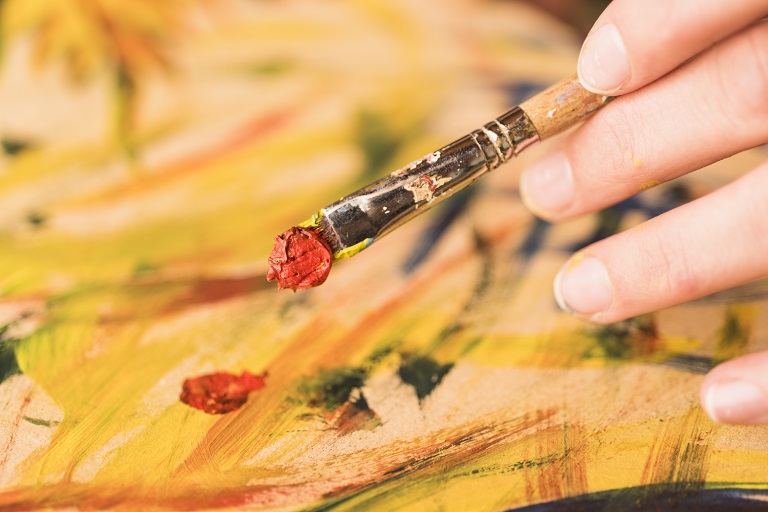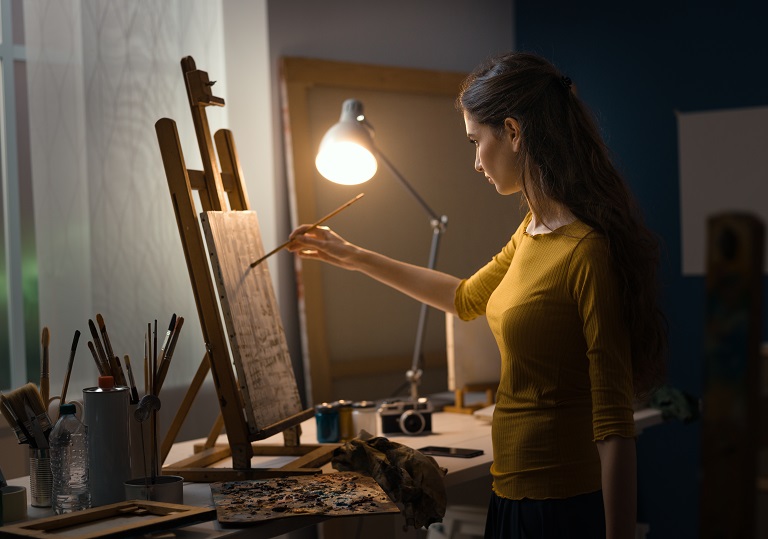Contents
Some of the most captivating Renaissance art masterpieces are in fact oil paint on canvas. Renaissance paintings are best known for their expressiveness and portrayal of complex emotions. This is due to the unique properties of the oil in the paint that allow artists to infuse expressiveness and depth into their paintings.
As such, oil paints continue to hold a very important place in the world of fine art. If you’re new to oil paints and want to craft your skills or upgrade your art studio and make it safe for using these paints, it’s essential to understand the fundamental aspects of this painting medium. By doing so, you’ll get a better understanding of how to harness the full potential of oil paints for your work. Shop from an extensive array of oil paints Australia wide and explore endless possibilities for artistic expression.
Understanding Oil Paints: Composition, Viscosity, Drying Time

Composition
Pigments
Oil paints are known for their vibrant colours. The vibrancy comes from the pigments used inside the paints. Pigments are finely ground particles that can be from organic or inorganic origin. They can vary in properties such as opacity, lightfastness and toxicity. The toxicity mostly depends on the type of pigments used in the paints. This is why most artists who work with oil paints make sure to work in well-ventilated areas.
If this concerns you, you don’t need to worry. One thing that today’s artists are blessed with is the possibility to explore an extensive range of oil paints Australia wide that are non-toxic. Many brands and manufacturers offer non-toxic alternatives to provide a space for safe work for everyone who wants to use oil paints, but cannot do so because of health reasons.
Binders
Binders are mediums that are used to hold the pigment particles together and adhere them to the painting surface. The most common binder found in oil paints is linseed oil, although other drying oils are also used.
Solvents
The purpose of solvents is to thin oil paints, and they’re often used to adjust the consistency of the paint mixture. The most commonly used solvents are turpentine, mineral spirits or odourless mineral spirits.
Viscosity
When talking about viscosity, we actually refer to the thickness and flowability of the paint. Different oil paints will have varying levels of viscosity, ranging from fluid and runny to thick and buttery. The viscosity of the paint will depend on the painting techniques you’re using and the effects you want to achieve.
Drying Time
In order for the oil paint to dry, it needs to go through a process called oxidation. Oxidation happens when oxygen molecules react with the oil binder, causing it to polymerise and harden. The drying time will mostly depend on the thickness of the paint and its overall composition, as well as the painting surface.
You can expect the oil painting to be dry to touch anywhere from 6-8 hours up to 3-4 days. However, it takes far longer for it to be fully curated. Although, you can always speed up the drying time using drying agents.
What Tools and Materials Will You Need
Brushes
The most fundamental supplies for oil painting are brushes. Brushes come in various shapes and sizes, each suitable for specific painting techniques and effects. Common brush shapes include round, flat, filbert, fan, liner and bright brushes.
Canvas or Wood Panels
Whether you choose a canvas or wood panel depends on your personal preferences and the techniques you want to use. Stretched canvases and wood panels are most commonly used for oil paintings. If you want a smooth painting surface, choose a pre-primed canvas or gessoed panel.
Palette Knives
Palette knives are essential oil painting materials used for mixing and applying paint directly onto the canvas. They often come as kits containing palette knives of various sizes and shapes, allowing artists to use them to create different effects and textures.
Oval Wood for Mixing Colours
A palette is another essential supply that is used for mixing and blending colours. The most commonly used type of palette for oil paints is oval wood, although you can also choose palettes made from different materials such as glass, acrylic or disposable paper palettes.
Oil Mediums
As previously mentioned, linseed oil is the most common medium used to modify the consistency and drying time of the paint. You can also use walnut, stand oil or alkyd mediums.
Solvents
Whenever you work with oil paints, it’s recommended to also have solvents. They can help you thin the oil paints, clean the brushes or remove paint from the palette.
Common Oil Painting Techniques

Layering
The term “layering” is pretty self-explanatory. This technique involves adding multiple layers to the painting to create depth, texture and complexity. Start by creating a base layer and continue to gradually add other layers to refine details, adjust the colour effect or enhance contrasts.
Glazing
Glazing means adding transparent layers of paint over already dry layers of paint on the canvas. This technique allows you to modify the colour, tone and luminosity of the underlying layers. It helps you create subtle colour shifts and atmospheric effects.
Brushwork
Brushwork refers to the way you apply the paint when using brushes. Artists apply different pressures, movements and brushstrokes to create various textures, patterns or visual effects. You can use broad strokes, cross-hatching, scumbling, stippling or any other movement that will help you create the desired effect.
Blending and Mixing
Blending and mixing are the most common techniques used when working with paint oils and with any other painting medium, as a matter of fact. What these two techniques mean is basically manipulating the paint while it’s still wet. Artists use these techniques to create smooth transitions and gradations. You can use brushes, palette knives or even your fingers to blend colours together, soften edges and create harmonious transitions between hues.

